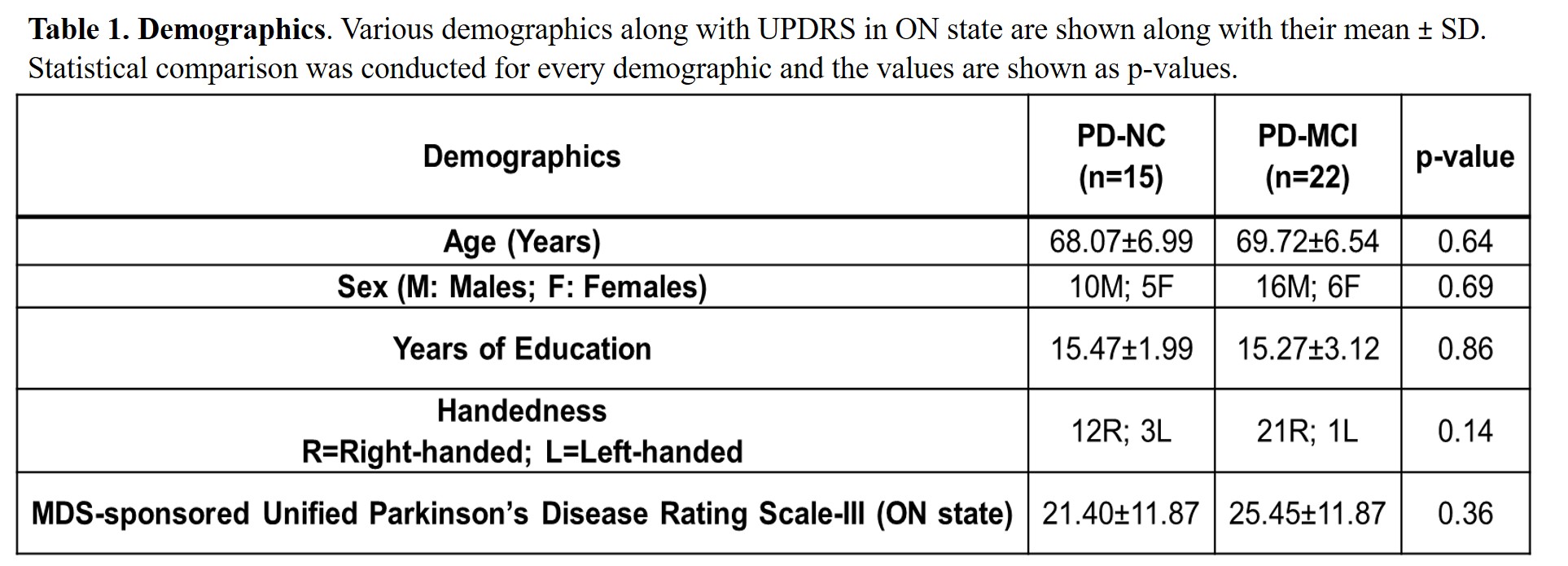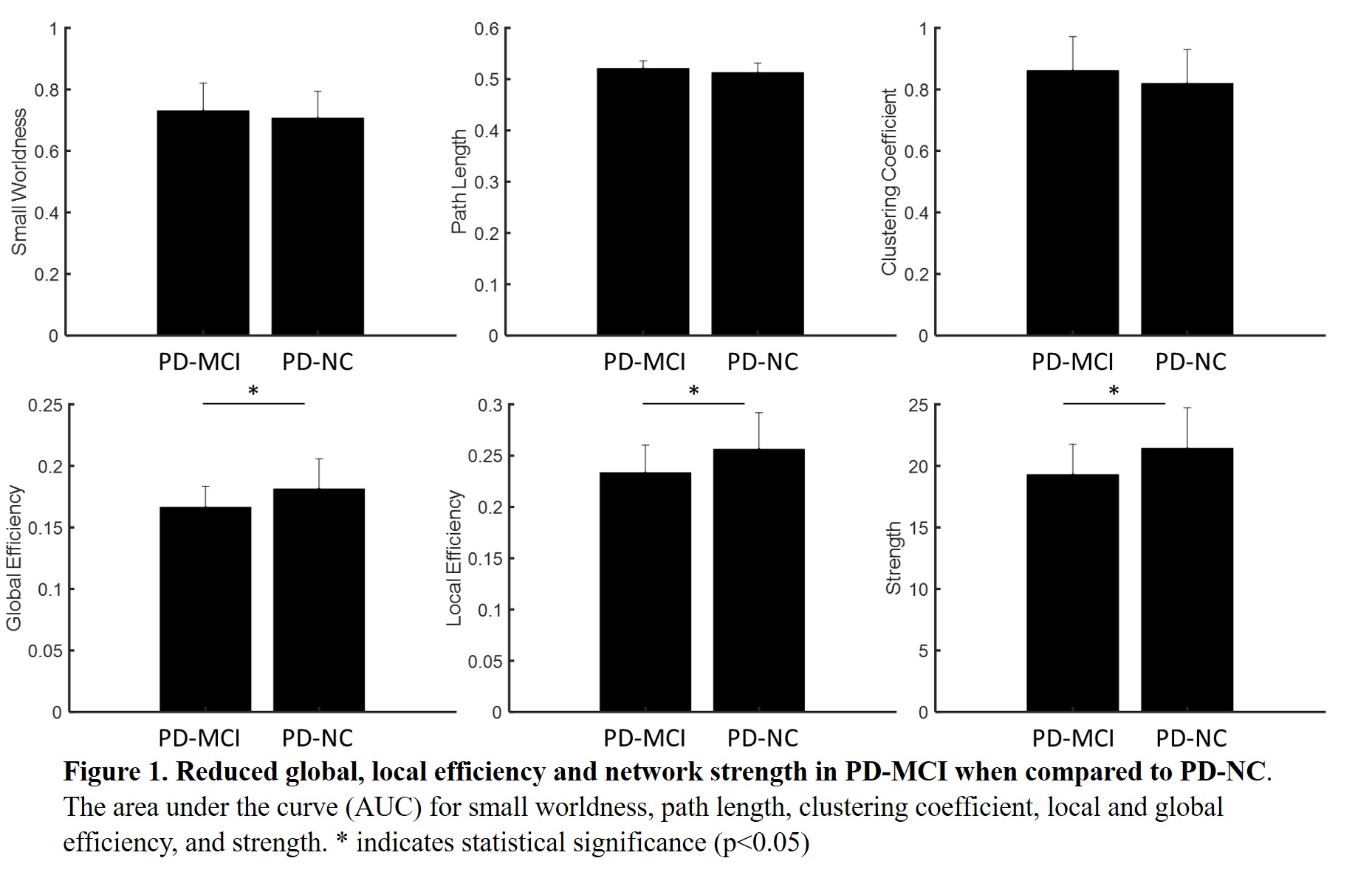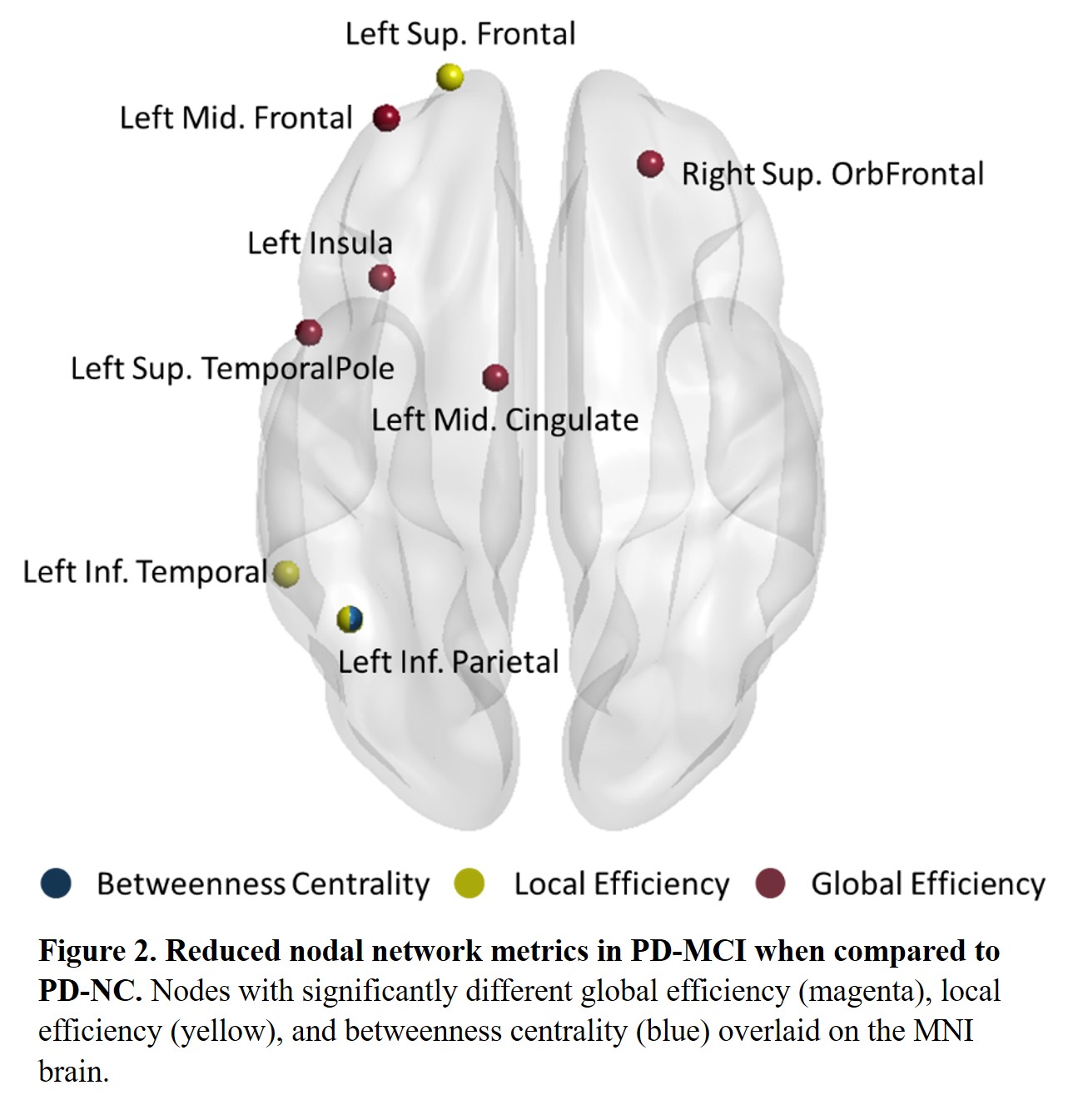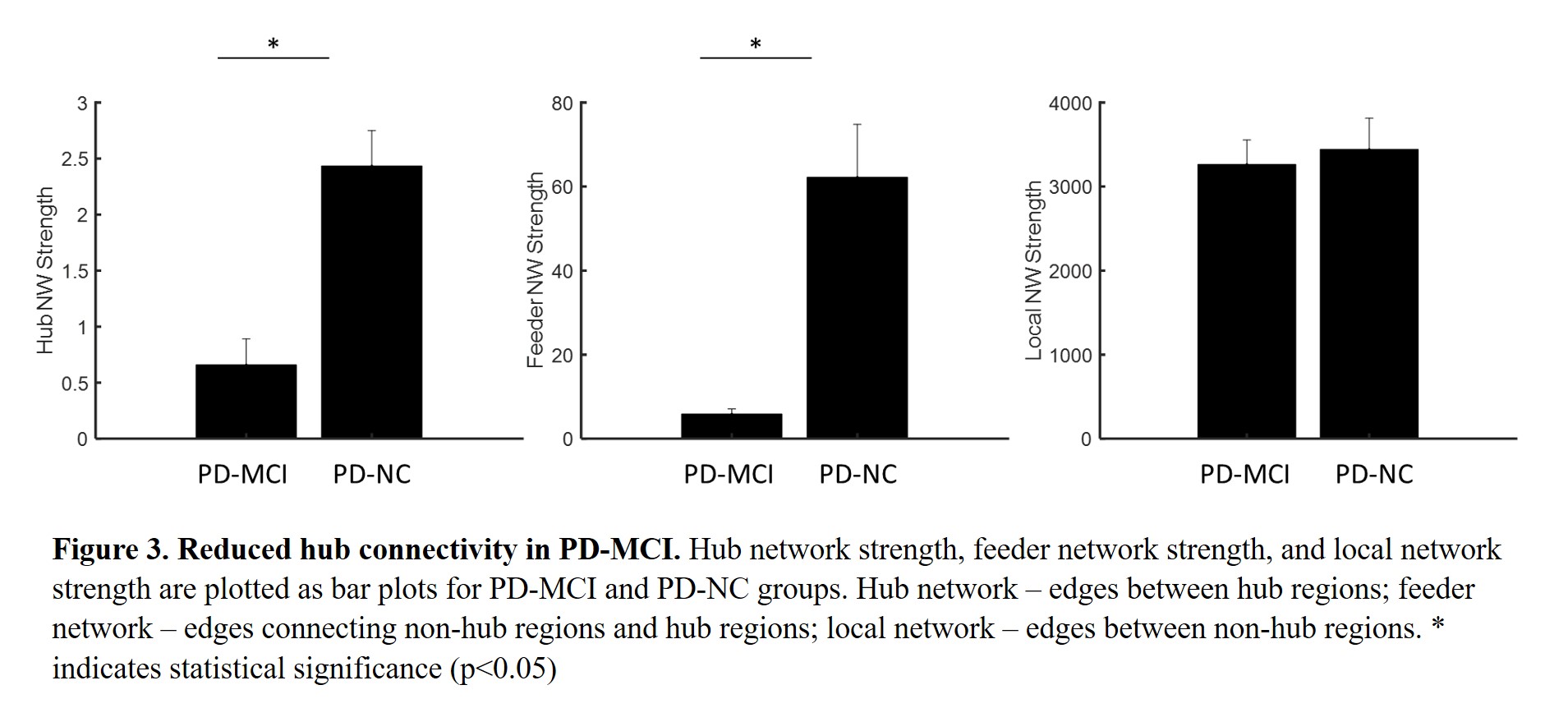Category: Parkinson's Disease: Cognitive functions
Objective: To investigate functional network abnormalities in Parkinson’s disease patients with mild cognitive impairment (PD-MCI) and PD patients who are cognitively normal (PD-NC).
Background: Cognitive deficits in PD patients are common and affect about 15%-40% of patients in the early stages1. Although previous studies have found disrupted functional and structural connectivity2,3 the topological organization and functional brain networks are still not completely understood.
Method: We recruited 22 PD-MCI and 15 PD-NC participants at our center (Table 1). A consensus diagnosis of PD-MCI was made by a practicing neurologist and neuropsychologist based on clinical presentation and neuropsychological evaluations of each participant. All participants underwent resting-state functional magnetic resonance imaging in the ON state. After standard preprocessing, mean time series were obtained from 264 different regions-of-interest defined in the Power264 atlas4. The regional connectivity was estimated using Pearson’s correlation between the time-series, and subsequently, connectivity matrices were obtained and graph-theoretical properties were computed. Statistical analysis were performed to examine global, local, and hub network property differences between groups.
Results: Graph theory analysis showed that both PD-MCI and PD-NC groups demonstrated a small-world organization. However, compared to the PD-NC group the PD-MCI group showed a decreased global and local efficiency, and network strength (Fig. 1). In the PD-MCI group several frontal, temporal and parietal regions showed reduced efficiency and centrality (Fig.2). The connectivity between the hub regions was significantly reduced in PD-MCI when compared to the PD-NC. Also, the connections to the hubs (feeder network strength) were significantly reduced in the PD-MCI group (Fig.3).
Conclusion: Our findings support the previous reports of altered functional organization and further show that there is reduced hub-region connectivity in PD-MCI. The connectivity between and to the hub regions is significantly affected in the PD-MCI group when compared to PD-NC. Within this ongoing study, correlations with behavioral measures are underway to better understand the relationship between hub connectivity dysfunction and cognition.
References: [1] Litvan I, Goldman JG, Tröster AI, et al. Diagnostic criteria for mild cognitive impairment in Parkinson’s disease: Movement Disorder Society Task Force guidelines. Mov Disord. 2012/01/24. 2012;27:349–356. [2] Wang W, Mei M, Gao Y, Huang B, Qiu Y, Zhang Y, Wang L, Zhao J, Huang Z, Wang L, Nie K. Changes of brain structural network connection in Parkinson’s disease patients with mild cognitive dysfunction: a study based on diffusion tensor imaging. J Neurol. 2020 Apr;267(4):933-943. doi: 10.1007/s00415-019-09645-x. Epub 2019 Dec 2. PMID: 31792673. [3] Amboni M, Tessitore A, Esposito F, Santangelo G, Picillo M, Vitale C, Giordano A, Erro R, de Micco R, Corbo D, Tedeschi G, Barone P. Resting-state functional connectivity associated with mild cognitive impairment in Parkinson’s disease. J Neurol. 2015 Feb;262(2):425-34. doi: 10.1007/s00415-014-7591-5. Epub 2014 Nov 27. PMID: 25428532. [4] Power JD, Cohen AL, Nelson SM, et al. Functional network organization of the human brain. Neuron. 2011;72(4):665-678. doi:10.1016/j.neuron.2011.09.006
To cite this abstract in AMA style:
K. Sreenivasan, X. Zhuang, J. Caldwell, A. Ritter, D. Cordes, Z. Mari, V. Mishra. Alterations in brain functional network connectivity in Parkinson’s disease patients with MCI [abstract]. Mov Disord. 2021; 36 (suppl 1). https://www.mdsabstracts.org/abstract/alterations-in-brain-functional-network-connectivity-in-parkinsons-disease-patients-with-mci/. Accessed December 20, 2025.« Back to MDS Virtual Congress 2021
MDS Abstracts - https://www.mdsabstracts.org/abstract/alterations-in-brain-functional-network-connectivity-in-parkinsons-disease-patients-with-mci/




